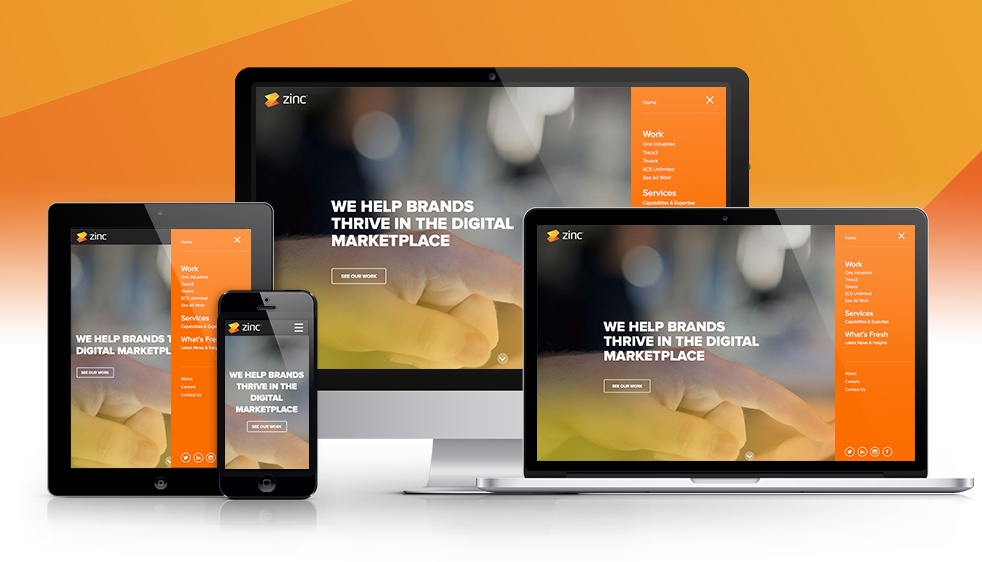
Pinterest is on fire, no doubt. Besides winning numerous social media awards, and generating more than 12 million unique visitors a month, they did it faster then any site in history. (yes, that includes Facebook). More importantly reposts show Pinterest is delivering more referral traffic then many of the major social media sites combined.
Pinterest has gained the attention of millions with its content aggregation and presentation platform that allows members curate collections of their interests and share their virtual pin-board with others within a simple and visually enjoyable site experience.
The tremendous Pinterest traffic and usage frenzy provides marketers with an opportunity to leverage its compelling visual nature and weave it into a cohesive social experience within a brand’s Facebook community.
Zinc has been following Pinterest closely as part of our normal vigilant assessment of the social space. Currently, Pinterest doesn’t have an API for third parties to build brand marketing management for the platform, but with some creativity and existing social media management tools, brands can leverage Pinterest right now and share in the increasing excitement.
This a list of five best practices for brands using Pinterest.
1. Push Pinterest content to your brands Facebook page
Images are more effective than text at encouraging engagement, and an effective technology platform will allow you to surface visually appealing content on one or more Facebook Tabs. This content can be presented as a simple pin-board, as part of a game, or even in the News Feed. But as you pursue this, don’t forget that over 40% of Facebook’s traffic comes from mobile devices. Make sure your platform can effectively surface tabs on mobile devices.
2. Optimize Your Web Properties to Draw People to Your Pinterest Content.
You can always put a “Follow Me on Pinterest” button on your website. But remember, a user’s choice to “Follow” may not be brand-specific, but rather board-specific. This gives you an opportunity to segment your followers in ways relevant to your business. Lowe’s does a nice job of this and has seasonal boards (the Big Game, Valentine’s Day), themed boards (Craft Ideas, Unique Pet Projects), and boards that tie to specific merchandise areas (Lighting, Bedrooms, Bathrooms). You’ve likely already had to start thinking about segmentation using Facebook Open Graph Objects. Pinterest Boards offer many of the same segmentation opportunities. A well-designed strategy will have you adding “Follow Me” buttons in places appropriate to the segment.
3. Tell Your Existing Social Audiences About What’s Happening on Pinterest.
Social networks mean different things to different people, and the chances are good you’ve already invested considerable effort in growing your fan/follower bases on Facebook, Twitter, and Google+. Make sure that you periodically post Pinterest content to those streams, and in a visually appealing way. Animated photo slideshows and other visuals can be used to surface Pinterest content right into fan News Feeds, for instance. The resulting acquisition of Pinterest followers and the deeper engagement with fans across multiple properties can pay great dividends.
4. Make Your Pins Work Harder For You.
This means using a URL shortening and redirection strategy, preferably one that aggregates your Pinterest analytics (views, Repins, etc.) in a central location. This will allow the metrics to be combined with, and compared to, those from your other social properties. You also need to combat the link rot that can occur when the source image feeding your Pin is removed from its website. With content as visually driven as Pinterest’s, broken links stand out like a sore thumb. Lastly, the pinned images themselves can be set to click through to a variety of sites. Imagine a Pin of a product that, once clicked, takes you to a flash sale where the product is sold at a discount after a minimum purchase threshold is met. All of this is possible now!
5. Arm Your Staff with Tools to Help Them Pin Great Content.
Content is king, and anything that makes it easier for your teams to identify and curate great content represents a competitive advantage. The Pinterest “Pin It” button works quite well for consumers. Unfortunately it wasn’t designed for marketers and is therefore missing some features that would let you include analytics tracking as a simple part of the “Pin It” process. This won’t last long, as tools to fill this gap are already under development.
Pinterest is still in its infancy, and time will tell if it continues its rapid growth or plateaus. But it certainly exhibits the potential to provide visually engaging experiences for consumers that marketers can weave into their social communities. Brands can start simple, then evaluate for effectiveness along the way. Being able to experiment with new and innovative platforms is part of the fun and excitement of social. And brands should start experimenting today.
Contact a representative at Zinc to see how we can help your brand take advantage of the Pinterest frenzy.

